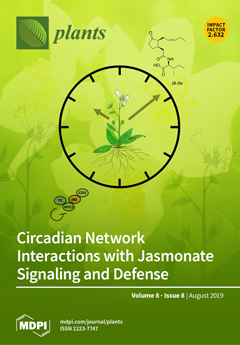Oxidative stress is involved in different diseases, such as diabetes and neurodegenerative diseases. The genus
Azorella includes about 70 species of flowering plant species; most of them are commonly used as food and in particular as a tea infusion in the Andean region
[...] Read more.
Oxidative stress is involved in different diseases, such as diabetes and neurodegenerative diseases. The genus
Azorella includes about 70 species of flowering plant species; most of them are commonly used as food and in particular as a tea infusion in the Andean region of South America in folk medicine to treat various chronic diseases.
Azorella glabra Wedd. aerial parts were firstly analyzed for their in vitro antioxidant activity using different complementary assays. In particular, radical scavenging activity was tested against biological neutral radical DPPH; ferric reducing power and lipid peroxidation inhibitory capacity (FRAP and
Beta-Carotene Bleaching tests) were also determined. The Relative Antioxidant Capacity Index (RACI) was used to compare data obtained by different assays. Then, the inhibitory ability of samples was investigated against
α-amylase and
α-glucosidase enzymes involved in diabetes and against acetylcholinesterase and butyrylcholinesterase enzymes considered as strategy for the treatment of Parkinson’s or Alzheimer’s diseases. Moreover, the phytochemical profile of the sample showing the highest RACI (1.35) and interesting enzymatic activities (IC
50 of 163.54 ± 9.72 and 215.29 ± 17.10 μg/mL in
α-glucosidase and acetylcholinesterase inhibition, respectively) was subjected to characterization and quantification of its phenolic composition using LC-MS/MS analysis. In fact, the ethyl acetate fraction derived from ethanol extract by liquid/liquid extraction showed 29 compounds, most of them are cinnamic acid derivatives, flavonoid derivatives, and a terpene. To the best of our knowledge, this is the first report about the evaluation of significant biological activities and phytochemical profile of
A. glabra, an important source of health-promoting phytochemicals.
Full article






